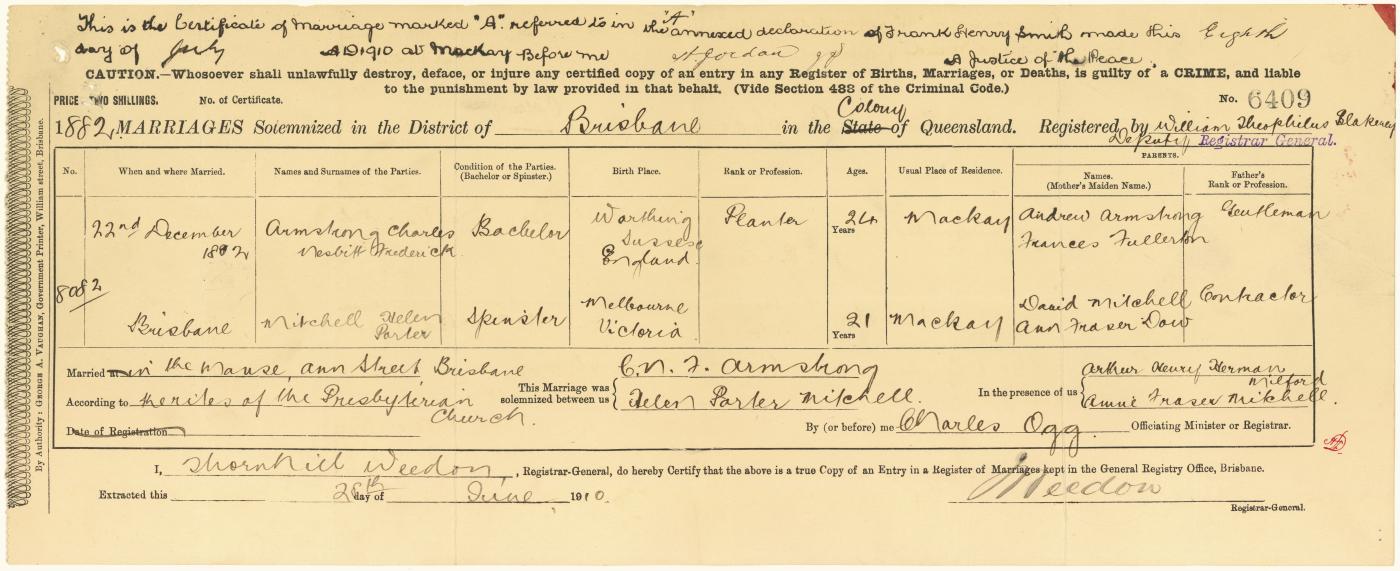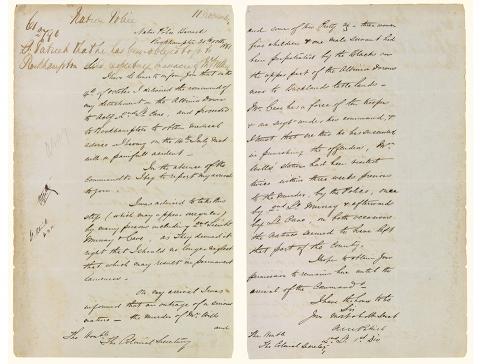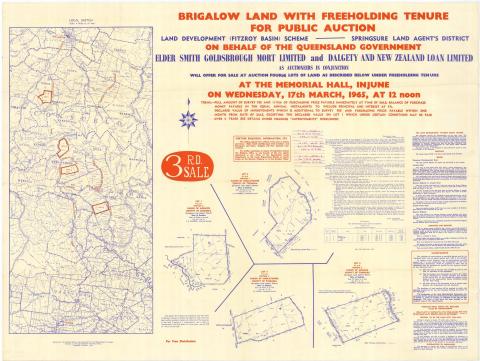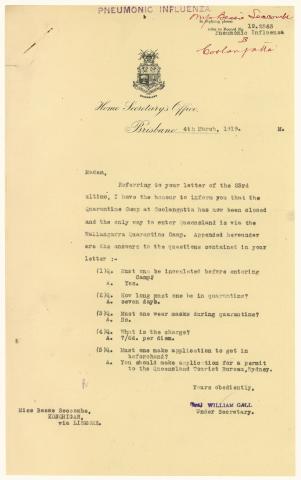
- News of the day
-
Courier-Mail, Tuesday 21 January 1947, page 2
Saw Melba Married
A recent report stated that Dame Nellie Melba was married in the Ann Street Presbyterian Church, Brisbane. This is almost correct—actually she was married in the Ann Street Presbyterian Church Manse, in the study of the late Rev. Charles Ogg (my father), who was the officiating minister.
The circumstances were these. Mr. James Mitchell, Melba's father, was on his way back to Melbourne after completing a contract for a sugar mill in Mackay, and he had taken his two daughters with him for a holiday after Mrs. Mitchell's death.
There Melba met Mr. Charles Armstrong, a sugar planter, and became engaged. She had just turned 21, and he was 24. The steamer in which the party travelled from Mackay arrived at Brisbane on the morning of December 22, 1882, and Mr Mitchell called on my father and made all necessary arrangements for the marriage of his daughter to take place the same afternoon at 3 p.m. in the manse.
The party consisted of Mr. Mitchell, his two daughters Nellie and Annie, Mr. Charles Nesbit, Frederick Armstrong, and Mr. Arthur Henry Herman Feez. They arrived in one of the old-fashioned wagonettes. The late Mr. A. H. H. Feez was well known in Brisbane for years as a popular and successful barrister. The ceremony was simple, short, and the witnesses were Mr. Mitchell, Miss Annie Mitchell, and Mr. Feez.
I think I was the only member of the public who saw the little party, viewed from a window.
--Margaret A. Ogg
- Background
-
World-acclaimed soprano and arguably the greatest of her generation, Dame Nellie Melba was born Helen Porter Mitchell at Melbourne in 1861. Following the death of her mother in 1880, Melba accompanied her father to Mackay in North Queensland where she met Charles Armstrong, the son of Sir Archibald Armstrong, who had emigrated to Australia to gain colonial experience.
The couple was married at Brisbane in 1882 and returned to Mackay where Melba spent two unhappy years. She returned to Melbourne determined to succeed as a singer, and after receiving training from Pietro Cecchi, Melba made a number of concert appearances before accompanying her husband and father to London where the latter had been appointed Victorian Commissioner to the Indian and Colonial Exhibition in 1886.
Disappointed in London, Melba moved to Paris where she received further training from Madame Marchesi, and debuted as an opera singer at Brussels in 1887. It was here that she became estranged from her husband, though a formal divorce did not take place until 1900. After Brussels, however, Melba’s professional career was meteoric, the singer being feted wherever she performed. Returning regularly to Australia, she maintained her supremacy right up until the time of her death in Sydney on 23 February 1931. More than 100 Melba renditions were recorded on gramophone records, a medium which she helped to establish. Dame Nellie Melba was also the first artist of international standing to participate in direct radio broadcasts.



